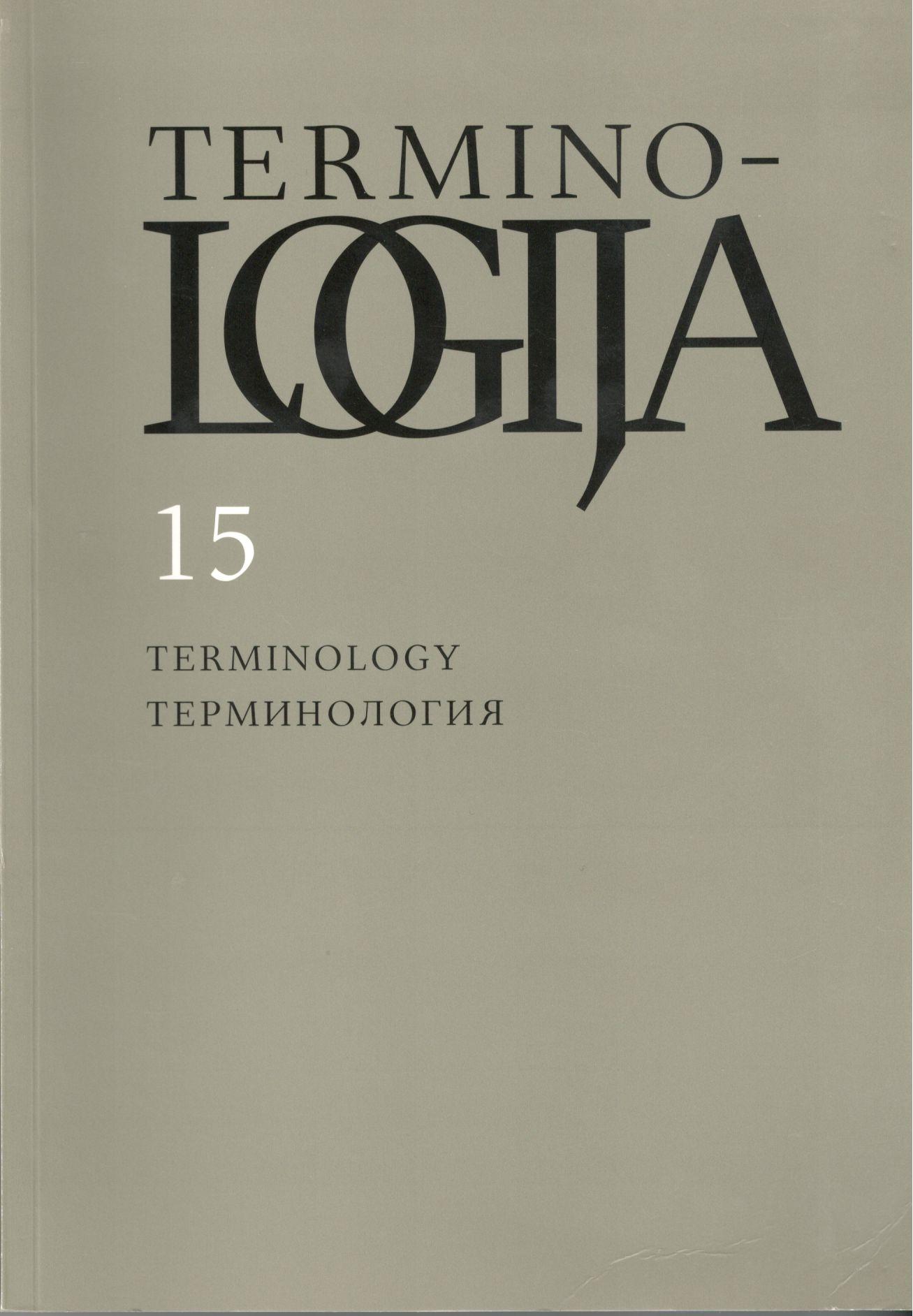Pirmųjų matematikos žodynėlių terminija
Terminology of the first dictionaries of mathematics
Author(s): Diana ŠilobritaitėSubject(s): Language and Literature Studies, Lexis, Semantics, Descriptive linguistics, Baltic Languages, Philology
Published by: Lietuvių Kalbos Institutas
Keywords: terminological dictionary; terms of mathematics; origin; synonyms;
Summary/Abstract: The beginning the 20th century is a very important stage of the creation of terms of mathematics – a lot of textbooks and exercise books of mathematics and, most importantly, first dictionaries of mathematics were published.Aritmetikos ir algebros terminų žodynėlis (Dictionary of terms of arithmetic and algebra) by M. Šikšnys and Geometrijos ir trigonometrijos terminų rinkinėlis (A collection of terms of geometry and trigonometry) by Z. Žemaitis were the first Lithuanian dictionaries of terms published in already restored independent Lithuania. They laid the foundations for the modern terminology of mathematics – the majority of terms from them took root in the language. However not all terms presented in dictionaries survived and were used in mathematics. The important thing is that special meanings of these terms, but not terms themselves vanished, because these words are still being used (įvardijimas (naming), luomas (caste, estate), skyrius (section, chapter) (M. Šikšnys); atmaina (species, variety), ieškinys (plaint, lawsuit, claim), priedėlis (appendage) (Z. Žemaitis)). There are some cases when only grammatical form of terms or their word-formation changed (išvadas (= išvada) (conclusion), lygtys (= lygtis) (equation), sudarymas (= darymas) (formation), lyginimas (= palyginimas) (congruence) (M. Šikšnys); liečiamoji (= liestinė) (tangent), kertamoji (= kirstinė) (secant line), veiksmaženklis (= veiksmo ženklas) (action sign) (Z. Žemaitis)). Only few terms from these dictionaries fell out of the usage in the modern language completely (išdalos (M. Šikšnys); prasmas, skretė (Z. Žemaitis)).In the earlier mentioned dictionaries there are some synonyms of terms (of the same or different origin), which are presented in brackets, after comma, dash or equal sign. However it is quite difficult to judge the synonymy, because rather frequently one Russian term has two or three equivalents, which in Lithuanian parts of dictionaries are presented as separate terms and in Russian parts – in the same term entry.The wish to purify terms and make them more Lithuanian is a particularly noticeable tendency. Terms of the foreign origin are not numerous (especially in the dictionary of M. Šikšnys). Almost all of them have Lithuanian equivalents, which are viewed as main variants. However, not all attempts to substitute international terms with Lithuanian terms were successful. There are few international terms the textbooks of mathematics, which were in usage for a long time (formulė (formula), kubas (cube) (M. Šikšnys); postulatas (postulate), principas (principle) (Z. Žemaitis)).
Journal: Terminologija
- Issue Year: 2008
- Issue No: 15
- Page Range: 170-196
- Page Count: 17
- Language: Lithuanian

